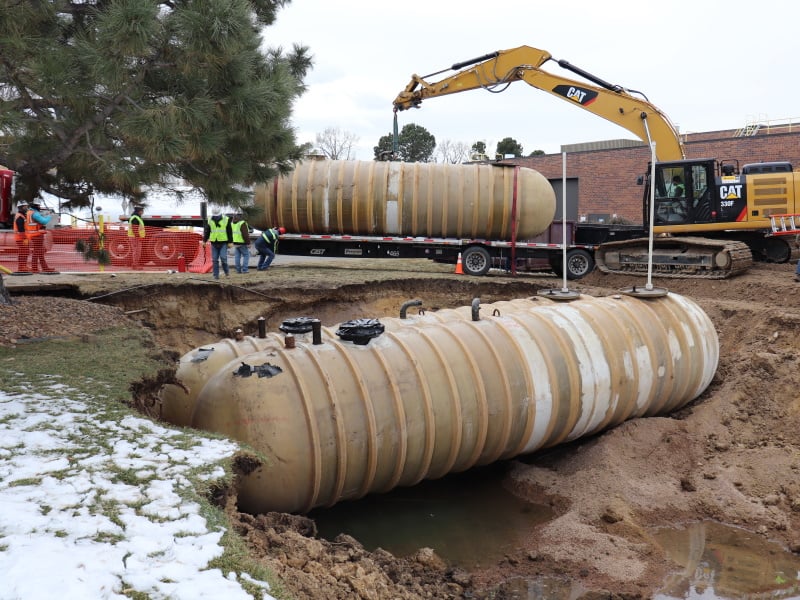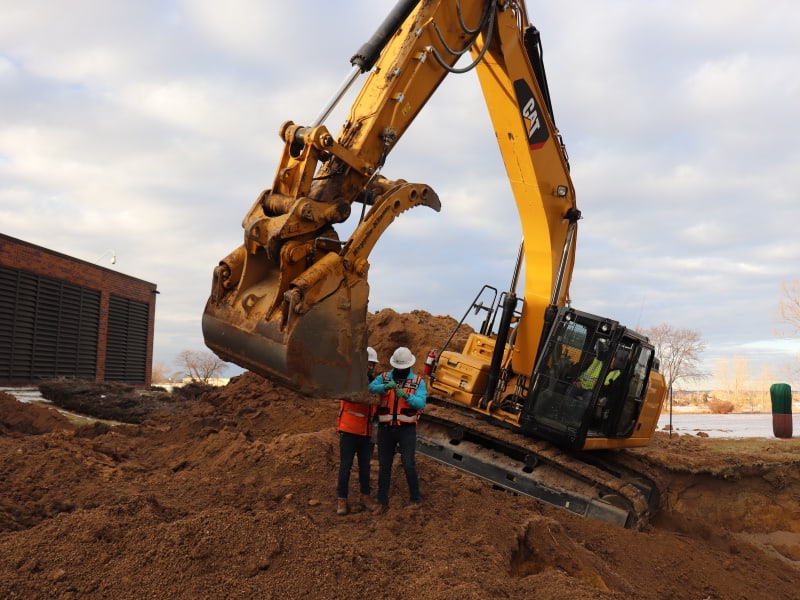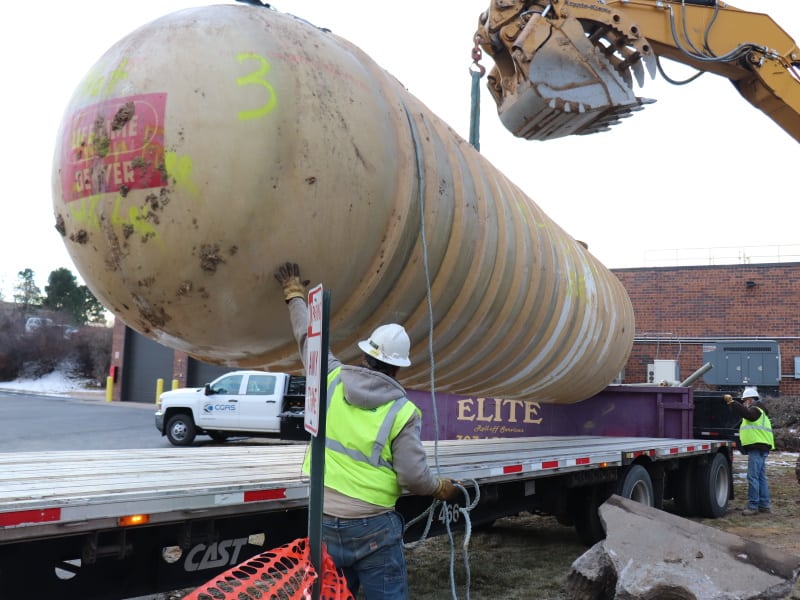Project Profile: Google Facility Triple Tank Removal
Thornton, Colorado
When an international tech giant’s local office decided to downsize its backup generator system and no longer needed its underground storage tanks, ‘googling’ wasn’t needed to find the right company for the job.
CGRS has provided compliance services, as a subcontractor, for the three 10,000-gallon underground storage tanks (USTs) at the Google facility located in Thornton since 2015. The tanks, installed in 1981, held diesel fuel and had performed well past their prime.
Google’s electrical contractor, Sturgeon Electric, hired CGRS to remove the tanks and provide environmental assessment of the soil and groundwater around the tanks per Colorado Division of Oil and Public Safety (OPS) requirements for tank closure. The scope of work also included backfilling the excavation to grade for re-sodding by Google.
While this job was in CGRS’s “sweet spot,” requiring members of both our Environmental Services and Environmental Construction teams, there was just one problem: our Environmental Construction team was booked and could not get to the project until early 2021, said Cory Kahler, CGRS’s Water/Wastewater Operations Manager. The client had a goal of removing the tanks before the close of 2020.
Fortunately, the Water/Wastewater team was between jobs and qualified to fill in.
“The project was a good fit for our water group as it required heavy equipment operators,” Kahler said, noting he and other members of his team had pulled tanks with CGRS Environmental Services and could handle the job. “With the combined knowledge of our teams, we came up with a plan and executed it.”
That plan addressed the best way to excavate without damaging the nearby 10,000-gallon water tank or causing the mature tree growing virtually on top of the tanks to topple on people, vehicles, equipment, or into the excavation during the tank pull. Both the water tank and tree survived without damage.
But that would not be the only challenge CGRS would face. The team experienced a permitting delay, forcing a several-day delay of the tank pull; trucks that were to haul the tanks away arrived later than scheduled; and groundwater issues arose during excavation.
“This required us to pump approximately 13,500 gallons of water that needed to be hauled off of the site and treated as contact water,” Kahler noted. “It created challenges with the backfill process. We had to continue to pump water until the excavation was above groundwater level to ensure proper compaction.”
While waiting for the last truck to arrive, CGRS’s Environmental scientists began collecting soil and groundwater samples, and the construction team started backfilling the tank excavation.
While field screening didn’t indicate the potential for a release, lab data confirmed minor detections of total extractable petroleum hydrocarbons (TEPH) in the groundwater and soil samples. The TEPH concentration in the soil sample was below the State’s action level (there is no action level for TEPH in groundwater at this time), so CGRS will prepare and submit to OPS a report requesting no further action.
Kahler said this project exemplified the ability of CGRS’s different divisions to work together and provide the best solution for customers.
“Google and Sturgeon both were pleased with the end result,” he said. “We had a large excavation and worked to get the project done in a quick and safe manner. The job was completed on time and within our budget.”
Communication and collaboration were key to a successful job, Kahler noted.
“Projects like this require extensive collaboration with the team,” he said. “They also require communication with local fire, city, and state inspectors to ensure safety and environmental compliance. A lot of front-end work takes place to make things happen. With our experience with projects like this, teamwork comes naturally.”






